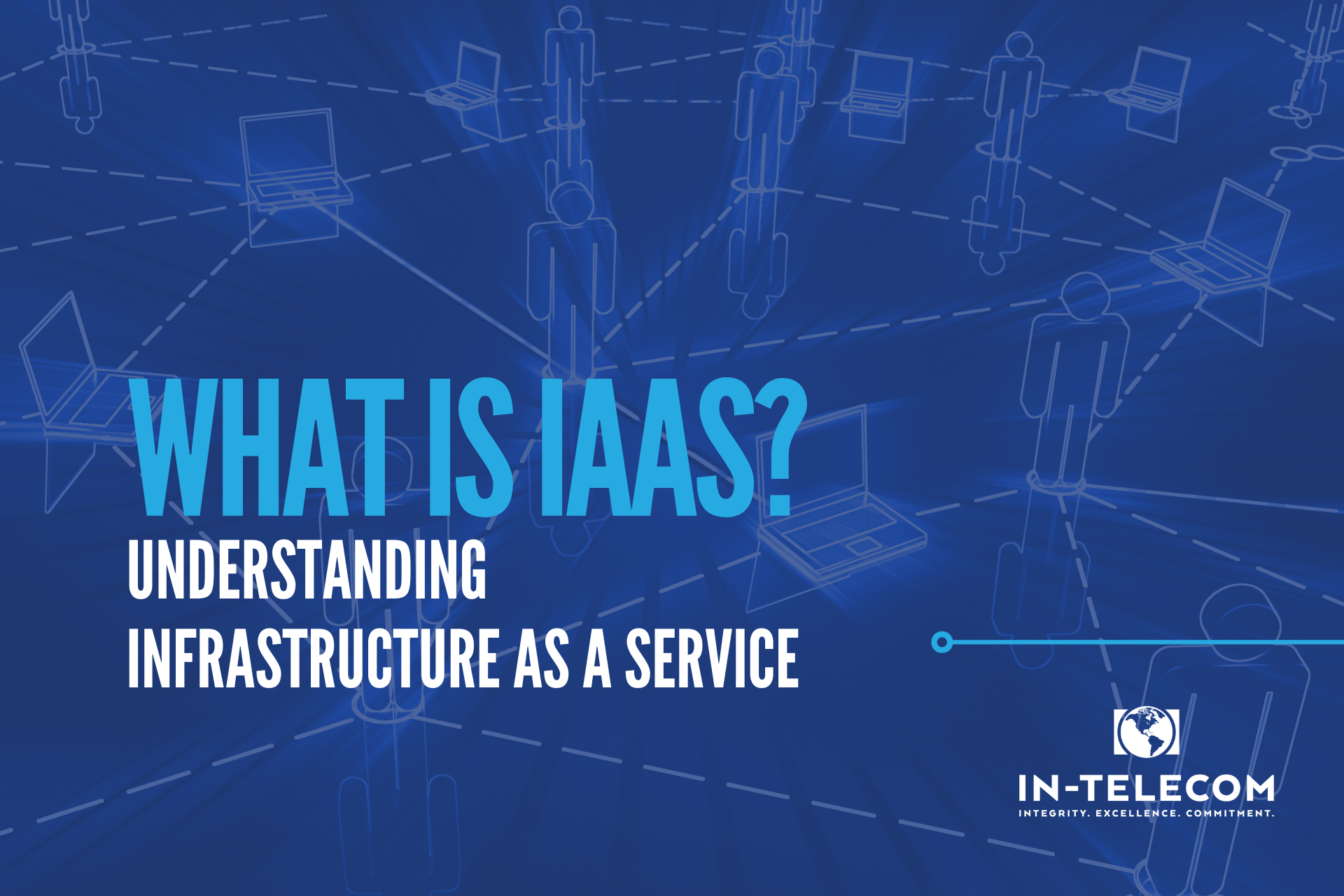
Infrastructure as a Service (IaaS) is a cloud computing service that provides businesses and organizations with virtualized computing resources over the Internet. This includes virtual machines, storage, networking, and more specialized services like load balancing and firewalls. With IaaS, organizations can rent these resources on-demand, paying only for what they use rather than having to invest in and maintain their physical infrastructure.
Infrastructure as a Service is becoming increasingly popular for businesses of all sizes, as it provides many benefits that can help organizations reduce costs, improve flexibility, and increase speed and agility. However, like any technology, there are also some potential drawbacks to using IaaS, and it’s essential to understand both the benefits and disadvantages to make informed decisions about whether or not it’s the right choice for your organization.
Table of Contents
To answer the question “What is IaaS?”, you need to know the different types of IaaS services available and explore the advantages and drawbacks of using IaaS. We will also look at some best practices for implementing and managing IaaS solutions and discuss the potential impact of IaaS on businesses and organizations in the future.
What is IaaS?
So, what is IaaS? IaaS is a cloud computing service that provides organizations with virtualized computing resources over the Internet. This includes virtual machines, storage, networking, and more specialized services like load balancing and firewalls. These resources can be rented on-demand from managed service providers, meaning organizations only pay for what they use rather than investing in and maintaining their physical infrastructure.
There are several different types of IaaS services available, including:
- Public IaaS: Public IaaS providers offer resources shared among multiple customers, with the provider managing the underlying infrastructure.
- Private IaaS: Private IaaS providers offer resources dedicated to a single customer, with the customer typically having more control over the underlying infrastructure.
- Hybrid IaaS: Hybrid IaaS providers offer a combination of public and private resources, allowing customers to choose the type of resources that best meet their needs.
IaaS can be compared with other cloud computing services like Software as a Service (SaaS) and Platform as a Service (PaaS). SaaS provides users access to software applications over the Internet, while PaaS provides a platform for building and deploying custom applications. IaaS is at a lower level than these, providing the underlying infrastructure like servers, storage, and network.
The key features and capabilities of IaaS include the following:
- Scalability: IaaS allows organizations to quickly and easily scale their IT resources up or down to meet changing business needs.
- Flexibility: IaaS allows organizations to choose the resources and services that best meet their needs rather than being locked into a specific hardware or software configuration.
- Security: IaaS providers typically offer a range of security features and services to help protect customers’ data and applications.
IaaS is a powerful technology that can provide several benefits to organizations. Still, it’s essential to understand the different types of IaaS services available and be aware of the critical features and capabilities of IaaS to make informed decisions about whether or not it’s the right choice for your organization.
The Advantages of IaaS
IaaS provides many advantages to organizations, including:
- Cost savings: One of the most significant benefits of IaaS is that it can help businesses reduce their IT costs. Organizations can avoid the upfront costs of buying and maintaining their physical infrastructure by renting resources on demand. Additionally, IaaS providers often offer a pay-as-you-go pricing model, meaning that organizations only pay for what they use rather than having to pay for resources they don’t need.
- Flexibility: IaaS allows organizations to quickly and easily scale their IT resources up or down to meet changing business needs. This can be especially useful for businesses that experience fluctuating demand or seasonal spikes in traffic.
- Speed: IaaS allows businesses to quickly spin up new IT infrastructure and services, which can help organizations get new projects and initiatives off the ground faster.
- Ease of management: IaaS providers typically offer a range of management and automation tools that make it easy to manage and configure the resources that you’re renting. This can help organizations save time and resources by reducing the need for IT staff to address the underlying infrastructure.
- Access to advanced technology: IaaS providers typically offer the most advanced technology, such as machine learning, artificial intelligence, and big data analytics, which can help organizations gain a competitive edge.
By renting resources on-demand, avoiding upfront costs, quickly scaling their IT resources, spinning up new IT infrastructure and services rapidly, managing them efficiently, and accessing advanced technology, IaaS can help organizations become more agile and responsive to changing business needs.
The Drawbacks of IaaS
While IaaS provides some benefits to organizations, there are also some potential drawbacks to using IaaS, including:
- Security: One of the biggest concerns with IaaS is security. Because organizations are renting resources from a third-party provider, they may be more vulnerable to security breaches or data loss. It’s crucial to ensure that the IaaS provider you choose has robust security measures, such as encryption and multi-factor authentication, and that you have the plan to protect your data and applications.
- Vendor lock-in: Another potential drawback of IaaS is that organizations may become dependent on a single provider, making it easier to switch to a different provider if needed. This can be especially problematic if the provider raises prices or experiences a service interruption. It’s essential to consider the risks of vendor lock-in when choosing an IaaS provider.
- Complexity: Managing and configuring IaaS solutions can be complex, and organizations may need additional staff or training to manage their IaaS resources effectively.
- Limited control: With IaaS, organizations may have less control over the underlying infrastructure than a traditional IT setup. This can make it more challenging to customize the environment to meet specific needs or to troubleshoot problems.
- Compliance concerns: Depending on the industry and location, there may be specific compliance requirements that must be met to use IaaS. Organizations need to ensure that they understand and can meet these requirements.
It’s essential to consider these potential drawbacks when deciding whether to use IaaS and to take the necessary steps to mitigate the risks and maximize the benefits of using this technology.
Best Practices for Infrastructure as a Service
Following some best practices when implementing and managing IaaS solutions is essential to get the most out of Infrastructure as a Service. These include:
- Choosing the right provider: When selecting an IaaS provider, it’s essential to choose one with a proven track record of security, reliability, and scalability. It would help if you also considered factors like pricing, service level agreements, and the provider’s reputation.
- Creating a security plan: IaaS providers typically offer a range of security features and services, but it’s essential to have the intent to protect your data and applications. This should include things like encryption, multi-factor authentication, and regular backups.
- Monitoring and managing resources: It’s essential to monitor your IaaS resources to ensure you’re getting the most out of them and avoid overspending. You should also monitor CPU, memory, and storage usage and adjust resources as necessary.
- Staying compliant: Depending on the industry and location, there may be specific compliance requirements that must be met to use IaaS. Organizations need to ensure that they understand and can meet these requirements.
- Developing a disaster recovery plan: Because IaaS providers operate over the Internet, it’s crucial to have a plan in place in case of a service interruption or other disaster. This plan should include regular backups, disaster recovery testing, and failover mechanisms.
By following these best practices, organizations can ensure they are getting the most out of their IaaS solutions while minimizing the potential risks and maximizing the benefits of using this technology.
Considering Infrastructure as a Service for Your Business?
IaaS is a powerful technology that can benefit organizations, including cost savings, flexibility, and speed. However, like any technology, there are also some potential drawbacks to using IaaS, such as security risks, vendor lock-in, and complexity.
Organizations need to understand the benefits and drawbacks of IaaS and decide whether it’s the right choice for their needs. If an organization chooses to use IaaS, it must follow best practices for implementing and managing IaaS solutions to minimize the risks and maximize the benefits.
As IaaS continues to evolve and mature, it will likely become an increasingly important tool for businesses and organizations of all sizes. If you’re considering IaaS for your organization, now is an excellent time to explore the options and take advantage of its benefits. Reach out to one of our experts for a free consultation to learn how Iaas can help you do better business.






